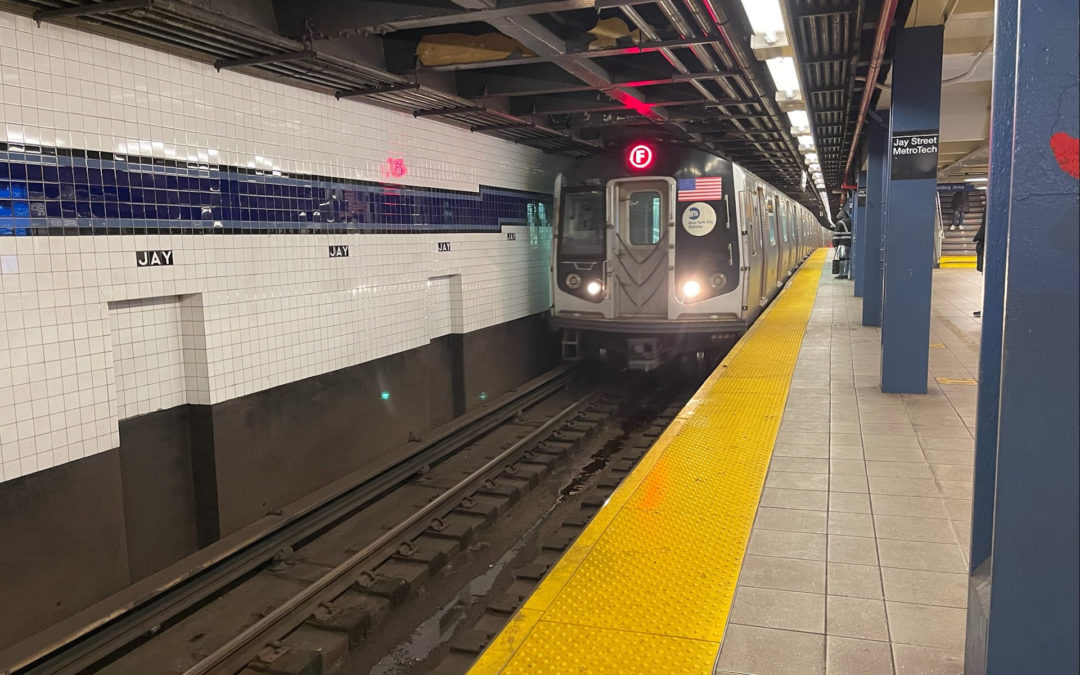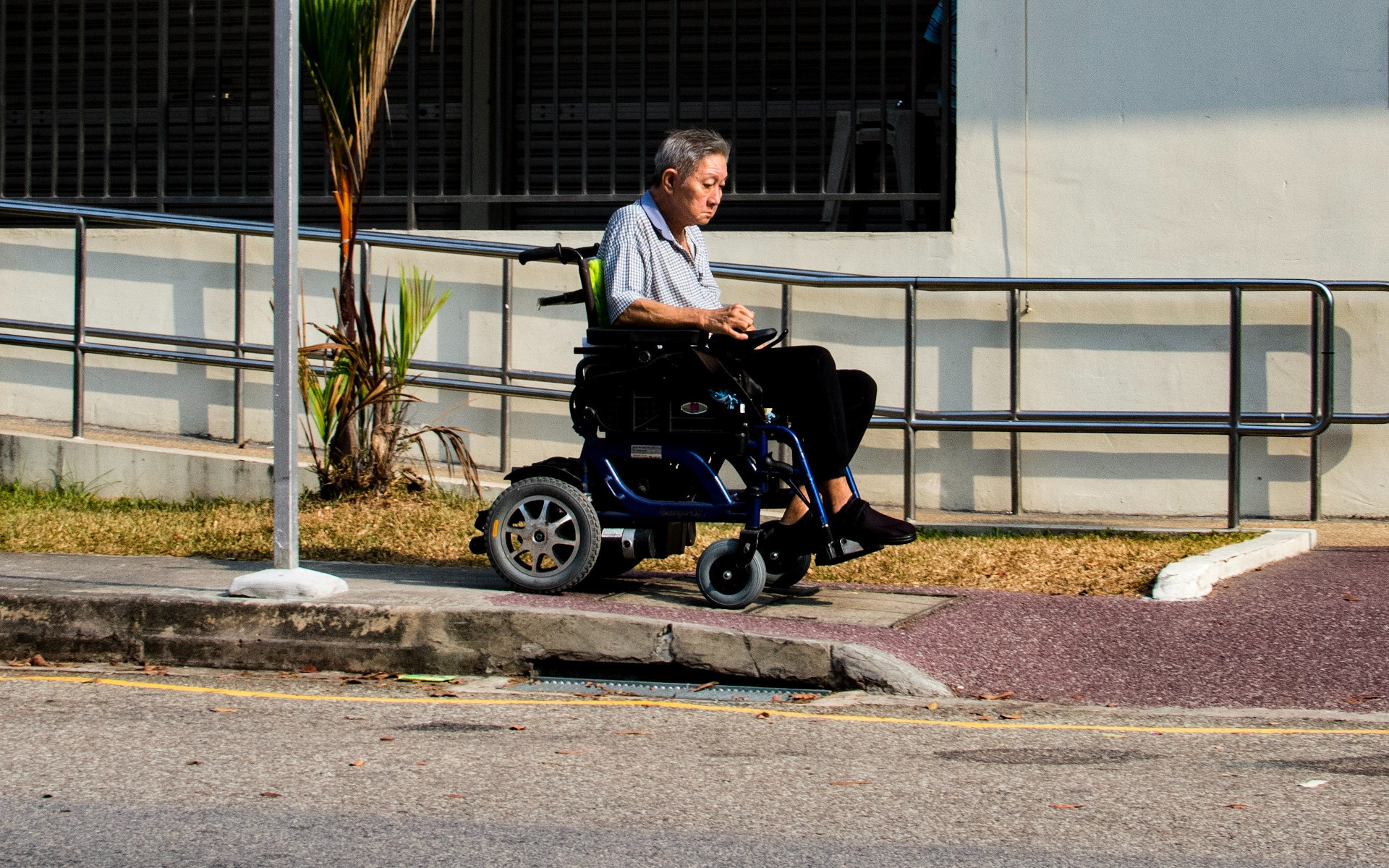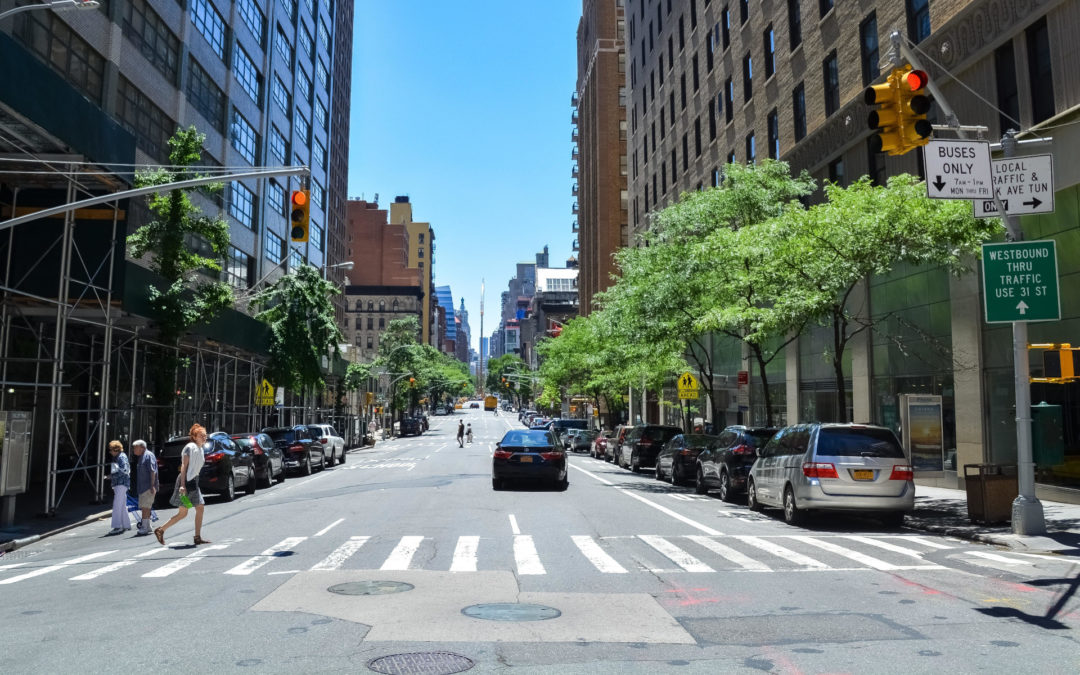The Helsinky subway improved their audio signage system by installing on demand and remotely activated audio beacons.

How to Create a Smart City for Blind and Visually Impaired People?

How to Create a Smart City for Blind and Visually Impaired People?
A smart city for blind and visually impaired people makes their lives easier. Especially regarding their mobility. Indeed, they need to rely on efficient public transportation, to know at what time they can get the bus, to have obstacle-free routes, to easily actuate accessible pedestrian signals…
Basically, this means they need to be more connected to the operational services of their city. And that’s exactly what a smart city does. But to better meet their needs, a smart city has to be accessible and inclusive.
How can a city be smart? How can you conceive an accessible smart city? Let’s take a look at digital solutions that connect blind and visually impaired people to the smart city!
What is a smart city?
A smart city is all about connectivity. It connects residents with their city. What’s the point exactly?
Well, to put it simply, a smart city is at the service of its inhabitants and tourists. Its purpose is to make their lives easier so that they can fully enjoy it.
But what makes a city a smart one? How does a smart city work?
It all lies in information and communication technology (ICT) and the Internet of Things (IoT). A smart city focuses on collecting data from residents, devices, buildings and transportation in order to improve its operational services.
This means that a smart city relies on technology to better serve its community. Consequently, a smart city is efficient: it offers public transit users real-time information on traffic, timetables, optimized routes…
For us at Okeenea, a smart city represents the gateway for a more accessible and inclusive city. After all, if its sole purpose is to help its citizens navigate the city more easily, then it includes people with disabilities.
And in this article, we’ll focus on blind and visually impaired people who need to feel safe and free to get around with more spontaneity and independence in their smart city.
How can you design a smart city fit for blind and visually impaired people?
What digital solutions can you implement for your smart city to meet the needs of people with vision disabilities? Seeing that mobility represents one of the most challenging issues for blind and visually impaired people, we’ll only see this aspect.
Let’s see how you can foster accessibility and inclusion:
⊗ Smart benches: even our urban furniture can be smart. A solar smart bench enables users to charge their phones and access free WiFi. And of course, they can still sit to rest for a while. A blind person can wait at a bus stop and use WiFi to know exactly at what time the bus arrives. A simple solution to access real-time information.
You can install smart benches at parks, bus shelters, squares, arenas, shopping malls, universities… Check out manufacturers like EnGoPlanet, Strawberrye, SEEDiA…
⊗ Safe Smart CLE: an initiative set up in Cleveland, Ohio to replace street lights with LEDs. The goal is to save money and energy while ensuring the safety of all citizens. Indeed, cameras are installed at crime hotspots, main streets and intersections. LEDs will benefit visually impaired people as they rely on good lighting to safely get around.
⊗ MaaS: a trip planner that regroups all modes of transportation. Blind and visually impaired people can access real-time information regarding traffic, public transit networks or shared mobility. The platform adapts to the user’s needs.
Mobility as a Service was born in Finland but is now implemented in several European cities like Madrid, Spain, Budapest, Hungary, Antwerp, Belgium… The city of Pittsburgh, Pennsylvania has recently been using MaaS.
⊗ Wayfindr: an indoor navigation technology especially conceived for blind and visually impaired people. It consists of audio navigation to remove accessibility barriers users can meet in venues.
Wayfindr is a non-profit organization set up in London, United Kingdom. It’s the first internationally-approved standard for accessible audio navigation.
⊗ NaviLens: an indoor navigation app developed by a Spanish company in Murcia. Blind and visually impaired people use their smartphone’s camera to scan QR codes laid out on the ground by following tactile guide paths.
This phygital solution mostly equips public transit networks in Murcia and Barcelona.
⊗ Evelity: our indoor navigation app that has been designed for people with disabilities. But it adapts to the user’s profile. This means that Evelity provides step-by-step audio instructions to blind and visually impaired users but that users with different disabilities and capabilities can set it up according to their needs.
Our wayfinding app is perfect for complex venues where getting around can be difficult for people with vision impairments. Evelity equips the subway of Marseilles, France. It is currently being tested by New Yorkers at the JaySt-MetroTech subway station.
But Evelity is also useful in museums: the app guides blind and visually impaired visitors from one exhibition room to another and it provides them with contextual information on the artworks. It works like a cultural mediation tool. The Maison Victor Hugo museum in Paris, France chose Evelity to offer their visitors an unique and interactive experience.
And that’s exactly what phygital solutions are for.
What Is a Phygital Experience and How Can It Improve the Accessibility of Your Venue?
⊗ aBeacon: an accessible pedestrian signal that we’ve developed as well at Okeenea. It collects data for smart cities to know the number of times blind and visually impaired people have activated it. Open data is also essential for pedestrians with vision disabilities to know what crossings are equipped with accessible pedestrian signals. This information enables them to create their own accessible routes. Plus, aBeacon can be actuated with three different modes of activation: the regular pushbutton, a remote control and a smartphone app.
The remote control and the smartphone app reduce noise pollution as aBeacon is only activated when necessary. An on-demand and remote activation that helps blind and visually impaired people better locate the beginning of the crossing.
This innovative accessible pedestrian signal is currently being tested in a crossing at New York City. The first user testimonies have been very positive. Blind and visually impaired pedestrians liked using several modes of activation to actuate aBeacon.
Why Is aBeacon a Game Changer Regarding Accessible Pedestrian Signals?
⊗ NAVIGUEO+ HIFI audio beacons: located at points of interest such as the entrance of a subway station or a public venue, they provide practical information to people with vision disabilities. They can better locate the entrance of a building. Just like aBeacon, these audio beacons we’ve conceived can be triggered by a remote control and a smartphone app.
The example of Marburg: a smart city for blind and visually impaired people
You may never have heard of Marburg in Germany but this city perfectly represents how smart cities can enhance accessibility and inclusion. It’s often referred to as the Mecca for the blind by newspapers.
This smart city has been conceived taking into account the needs of blind and visually impaired people. It has implemented:
⊗ Beeping traffic lights,
⊗ Talking bus stops,
⊗ Tactile signals of hazards or barriers,
⊗ Raised maps and floor plans,
⊗ Braille menus in restaurants…
All of these solutions enable blind and visually impaired people to enjoy their smart city. But the key in their success resides in fostering a culture where residents are used to interacting with one another regardless of their disabilities and capabilities.
Cultural acceptance of the blind and visually impaired people made the smart city of Marburg unique in its approach. This proves that from the moment you integrate accessibility and inclusion into the conception of your smart city, you create a city focused on the wellbeing of its residents.
Why will a smart city for blind and visually impaired people become the new norm?
This question is in fact tricky. A smart city that meets the needs of blind and visually impaired people has to become the norm. But it actually has to do the same for all those with disabilities. We’ll be even more inclusive: a smart city has to adapt to people in general, whether they have reduced mobility or not.
As we’re focusing here on the mobility of people with visual impairments in a smart city, let’s explore what difficulties they face:
⊗ Navigating routes with obstacles or barriers (when there are street works for example),
⊗ Crossing the street when there’s no accessible pedestrian signal,
⊗ Locating the beginning of the crossing to press the pushbutton in order to actuate the APS,
⊗ Locating the entrance of a building,
⊗ Locating the entrance of a bus or any other public transportation,
⊗ Accessing information about public transit timetables, traffic… when it’s not vocalized,
⊗ Navigating their way in a shared street,
⊗ Getting around in a complex venue…
A smart city enables blind and visually impaired people to easily get around. We’ve mentioned earlier how it collects information and data. Open data regarding street works can be useful for them. Indeed, this can help them know what routes are blocked. They can then create their own obstacle-free itinerary to better navigate the city.
Find out more about their getting around in a city with our article:
Blind Pedestrians: What Are Their Difficulties When Crossing the Street?
The United States counts around 12 million people with vision disabilities. This doesn’t even comprehend the entire Los Angeles county. We can no longer afford to create cities where a portion of its citizens struggle to get around and don’t live comfortably.
It’s time for more accessibility and inclusion to conceive a smart city where blind and visually impaired people can easily navigate into. The city has to adapt to them, not the other way around.
Want to know more about digital solutions for the visually impaired? Check out these articles:
The Smartphone: a Revolution for the Blind and Visually Impaired!
Published on August 12th, 2022
media

Cultural acceptance of the blind and visually impaired people made the smart city of Marburg unique in its approach. This proves that from the moment you integrate accessibility and inclusion into the conception of your smart city, you create a city focused on the wellbeing of its residents.
writer

Carole Martinez
Content Manager
stay updated
Get the latest news about accessibility and the Smart City.
other articles for you

How to Create a Smart City for Deaf and Hearing Impaired People?
From the conception of your smart city, take into account the difficulties met by people with hearing impairments. The smart city needs to be exemplary in terms of accessibility.

How to Create a Smart City for Blind and Visually Impaired People?
A smart city represents the gateway for a more accessible and inclusive city. Its sole purpose is to serve its citizens, including those with visual impairments.

How to Create a Smart City for People with Physical Disabilities?
A smart city for people with physical disabilities takes into account their needs. Especially regarding their mobility.

Assistive Technology for People with Disabilities: Is Human Assistance Really Obsolete for Their Mobility?
When getting around or finding their bearings in a complex venue, assistive technology can often replace human assistance.
share our article!
more articles

8 Clichés on Accessibility for Blind and Visually Impaired People
8 Clichés on Accessibility for Blind and Visually Impaired People What do people with a visual impairment need? Why are accessibility regulations so strict regarding visual and tactile contrasts, fall prevention and signage? You’ll discover in this article a few...

How to Foster Inclusive Mobility at Public Transit?
How to Foster Inclusive Mobility at Public Transit?You probably have heard of inclusive mobility but do you know what it actually means? For public transit all over the world, this notion gets more and more important. And more realistic to implement as many...

At What Intersections Should You Install Accessible Pedestrian Signals?
At What Intersections Should You Install Accessible Pedestrian Signals? When you install accessible pedestrian signals, you first need to ask yourself where exactly they are needed. Are there any intersections blind and visually impaired pedestrians particularly...

Invisible Disabilities: 80% of Disabled People Are Concerned!
Invisible Disabilities: 80% of Disabled People Are Concerned! Having a disability = using a wheelchair. That’s one persisting cliché! Actually, only 2% of people with disabilities are wheelchair users but 80% have invisible disabilities! What we mean by “invisible...
NEVER miss the latest news about the Smart City.
Sign up now for our newsletter.
Unsubscribe in one click. The information collected is confidential and kept safe.
powered by okeenea
The French leading company
on the accessibility market.
For more than 25 years, we have been developing architectural access solutions for buildings and streets. Everyday, we rethink today’s cities to transform them in smart cities accessible to everyone.
By creating solutions ever more tailored to the needs of people with disabilities, we push the limits, constantly improve the urban life and make the cities more enjoyable for the growing majority.




























Recent Comments